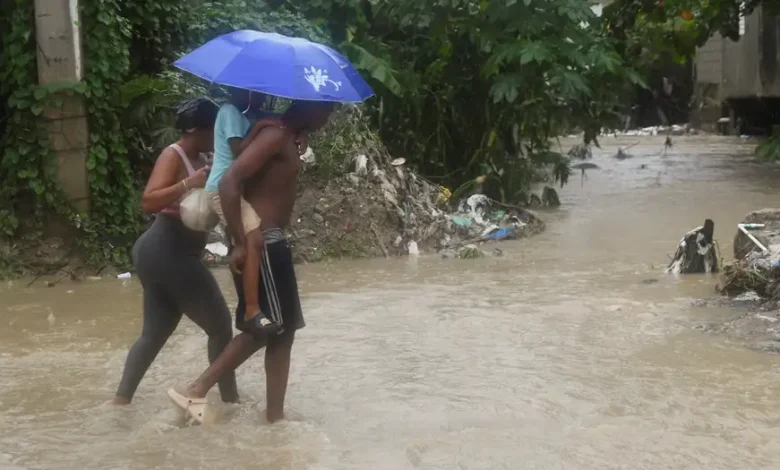Deadly Tropical Storm Melissa pummels Caribbean

CARIBBEAN: TROPICAL Storm Melissa raged over the Caribbean on Friday, with forecasters warning that it is likely to strengthen into a hurricane and possibly bring massive rainfall, flooding and landslides to the north of the region.
Melissa has already led to three deaths in Haiti, with two people killed in a landslide in the island nation’s west on Thursday and a third dying after a tree fell on them amid heavy rain earlier in the week.
A fourth person has been killed in the Dominican Republic, where another person remains missing.
Nearly 200 homes in the Dominican Republic have been destroyed, while water supply to more than half a million people has been disrupted.
Warning of ‘catastrophic’ flooding
Melissa could take on hurricane strength in “in Haiti later this weekend and Jamaica beginning late this weekend or early next week,” according to the US National Hurricane Center (NHC).
In an update at at 8:00 p.m. Eastern Time (0000 Saturday GMT), the NHC said “Melissa is expected to bring total rainfall of 15 to 25 inches (38 to 64 centimeters) to portions of southern Hispaniola and Jamaica through Tuesday.”
Up to 89 centimeters of rain is even possible across Haiti’s Tiburon Peninsula in the southwest, according to the NHC.
It said there could be “catastrophic flash flooding and landslides” across parts of Jamaica and the southern parts of both Haiti and the Dominican Republic.
Southeast Cuba is also expected to be hit and receive between 10 and 20 centimeters of rain.

Above-normal hurricane season expected
At the time of the update, the storm was located about 290 kilometers (180 miles) southeast of Kingston, Jamaica, and about 390 kilometers southwest of Port-au-Prince, Haiti.
It was carrying maximum sustained winds of 100 kph (65 mph) and was moving northwest at 6 kph, according to the NHC.
Melissa is the 13th named storm of the Atlantic hurricane season, which runs from June 1 to November 30.
The US National Oceanic and Atmospheric Administration (NOAA) has predicted an above-normal season, with 13 to 18 named storms.
Scientists say that such extreme weather events are increasing in intensity and frequency as the atmosphere warms, owing largely to human fossil-fuel use.





